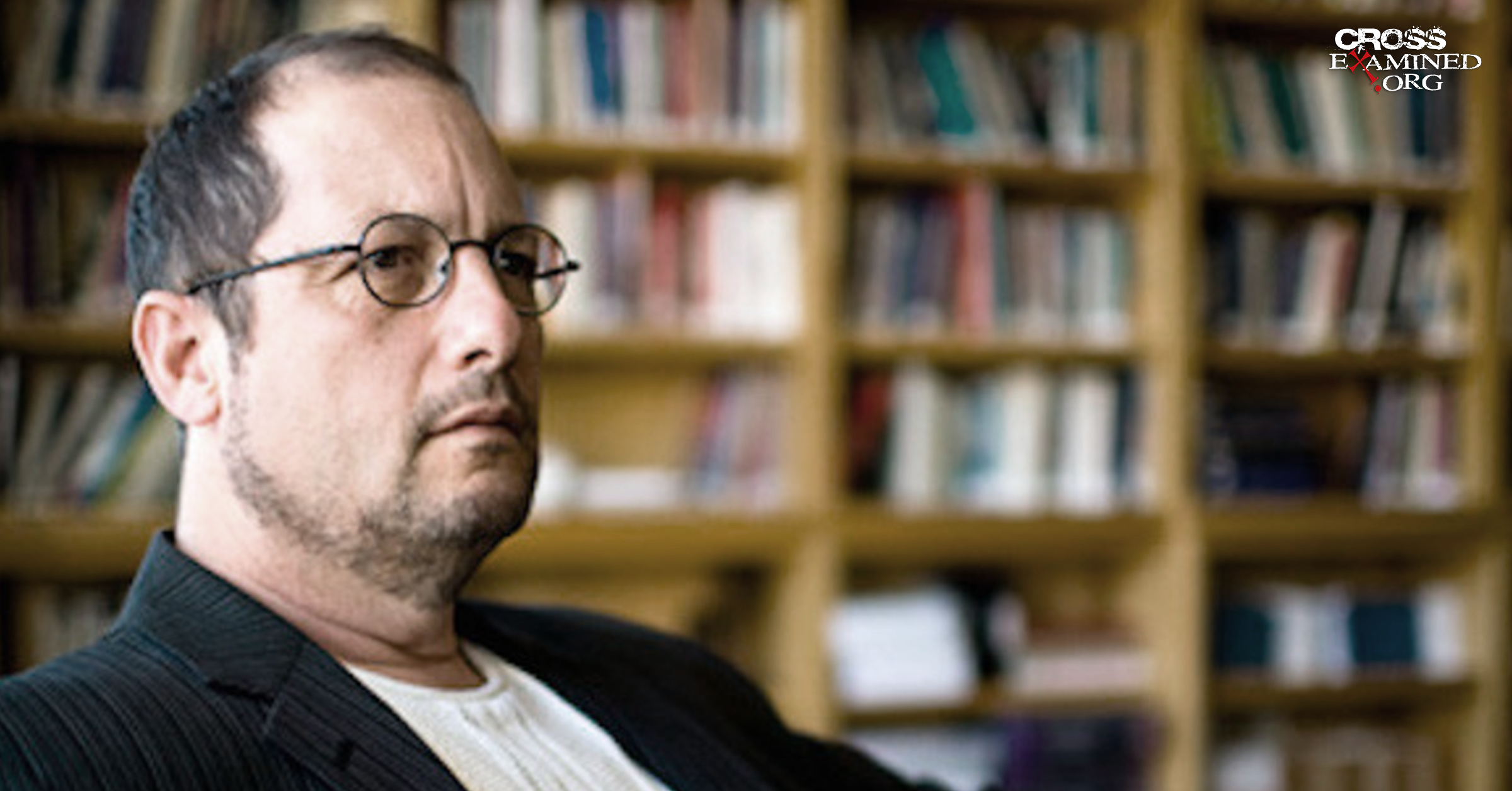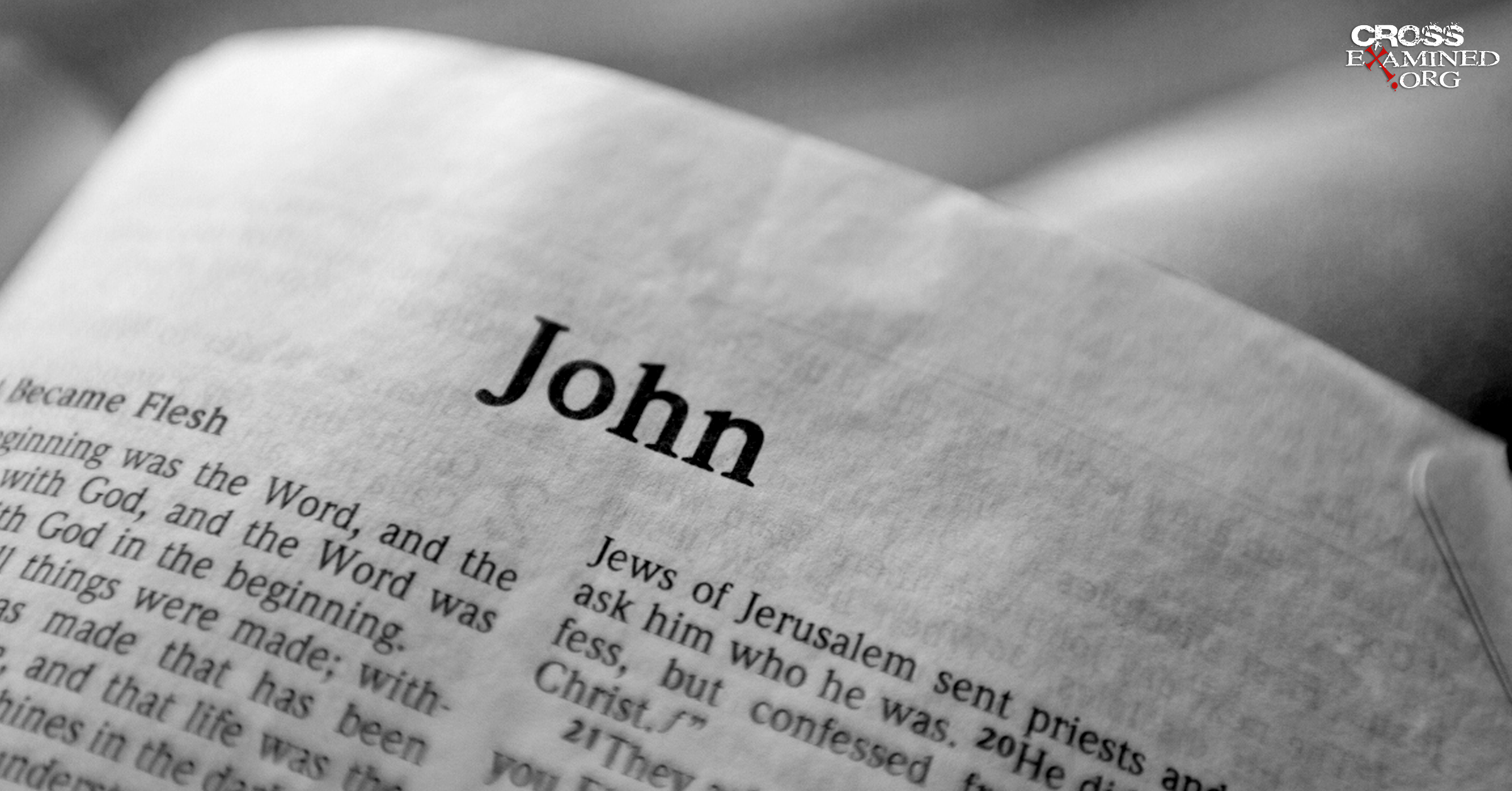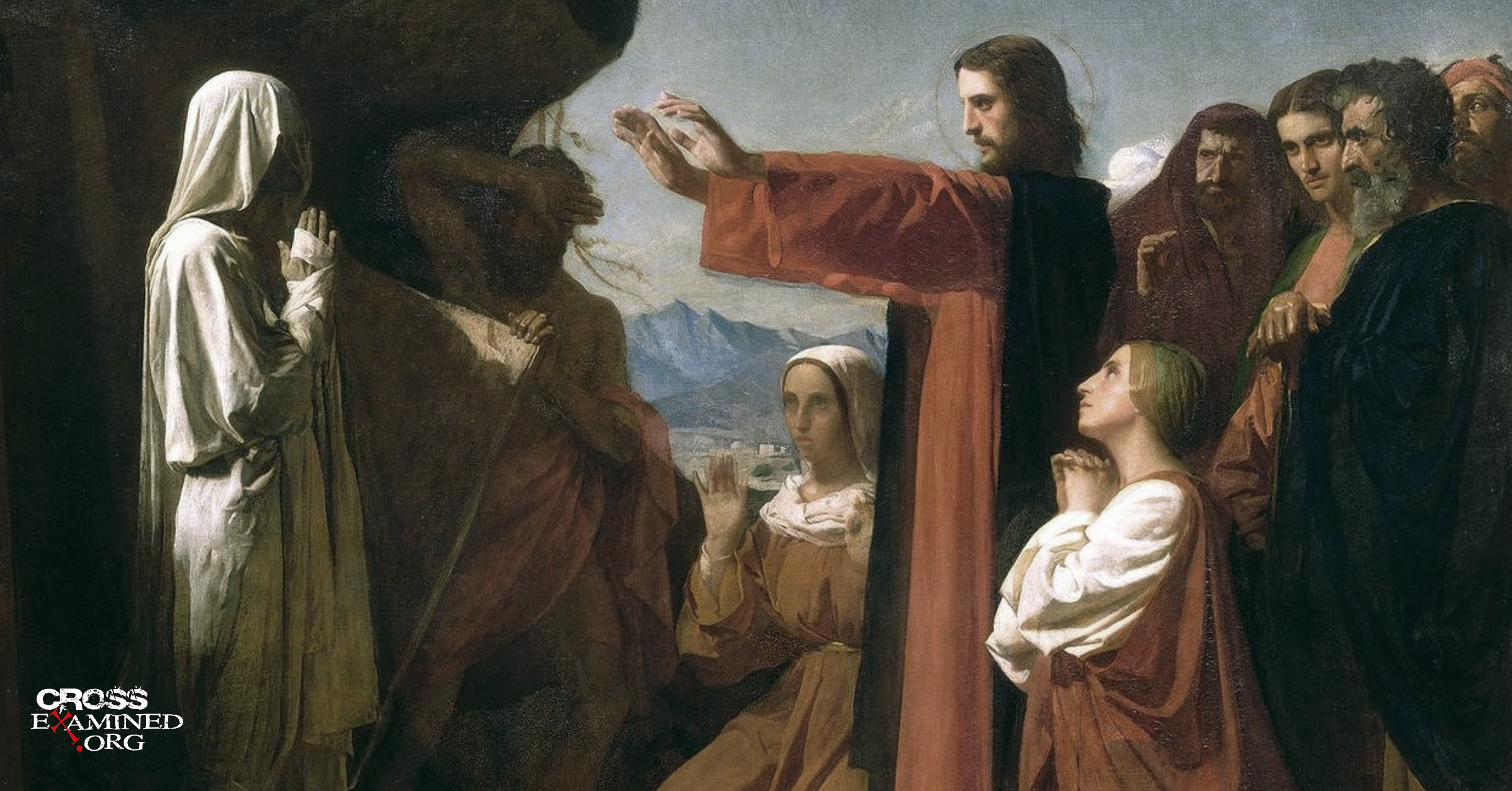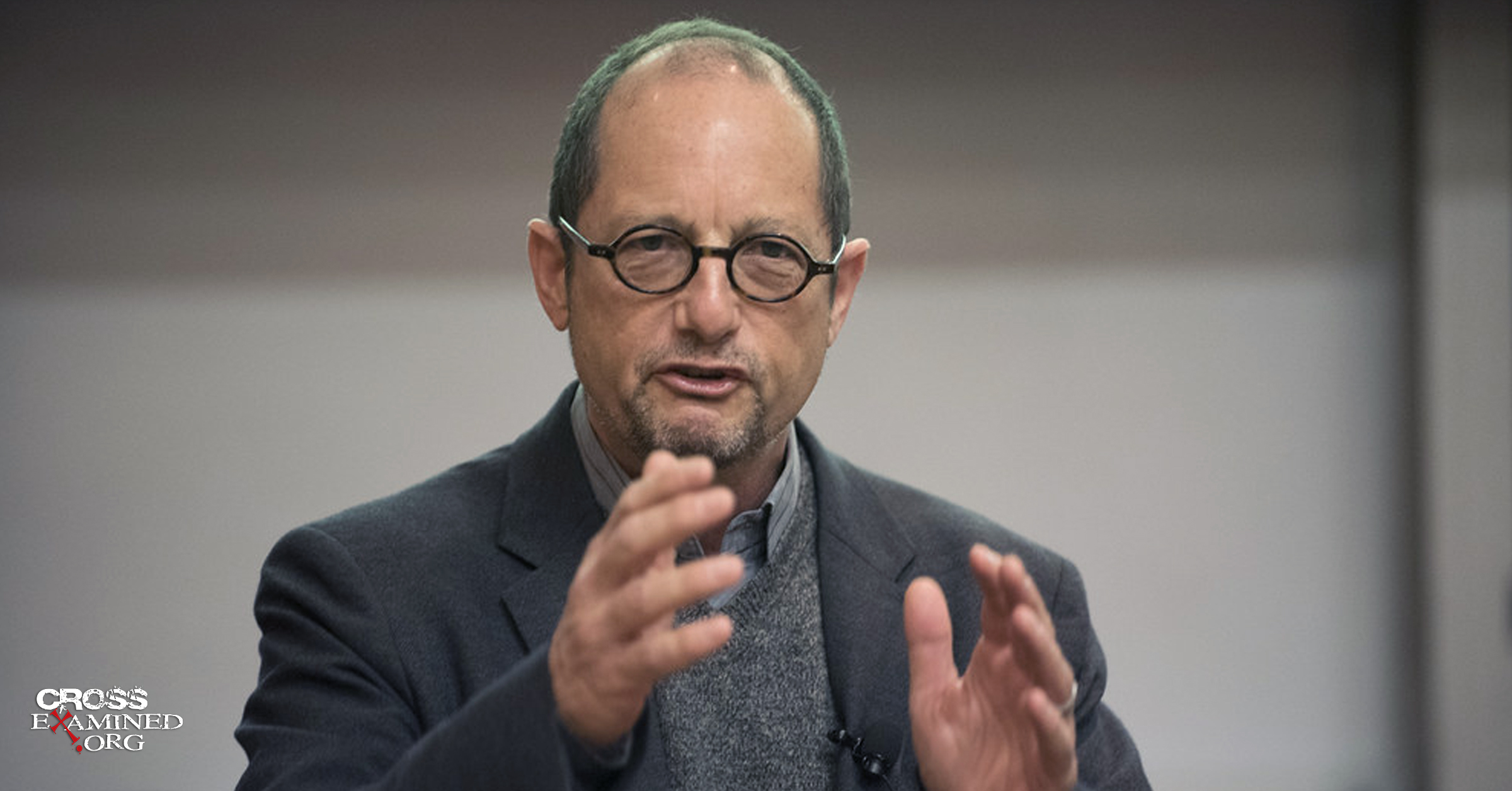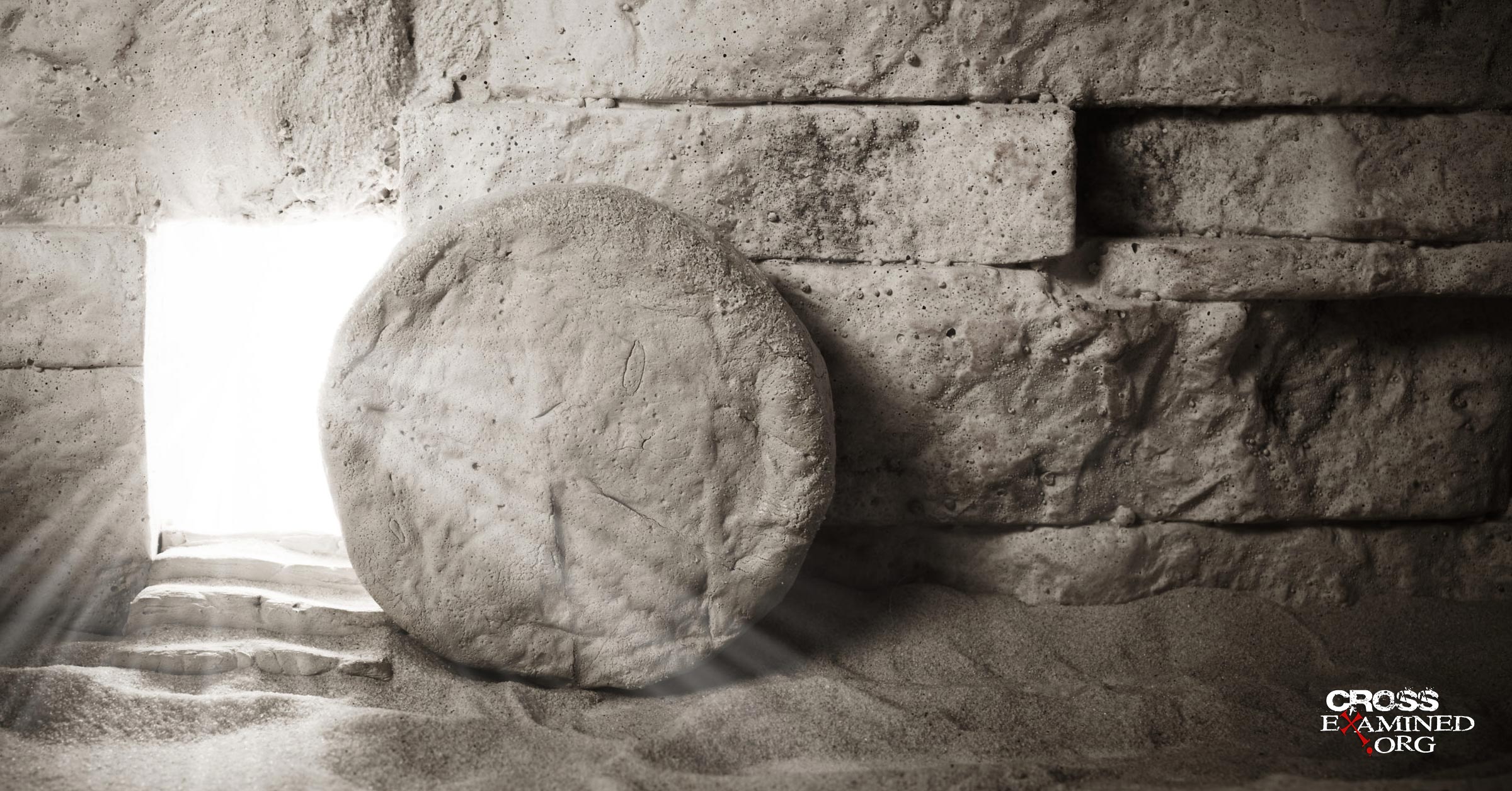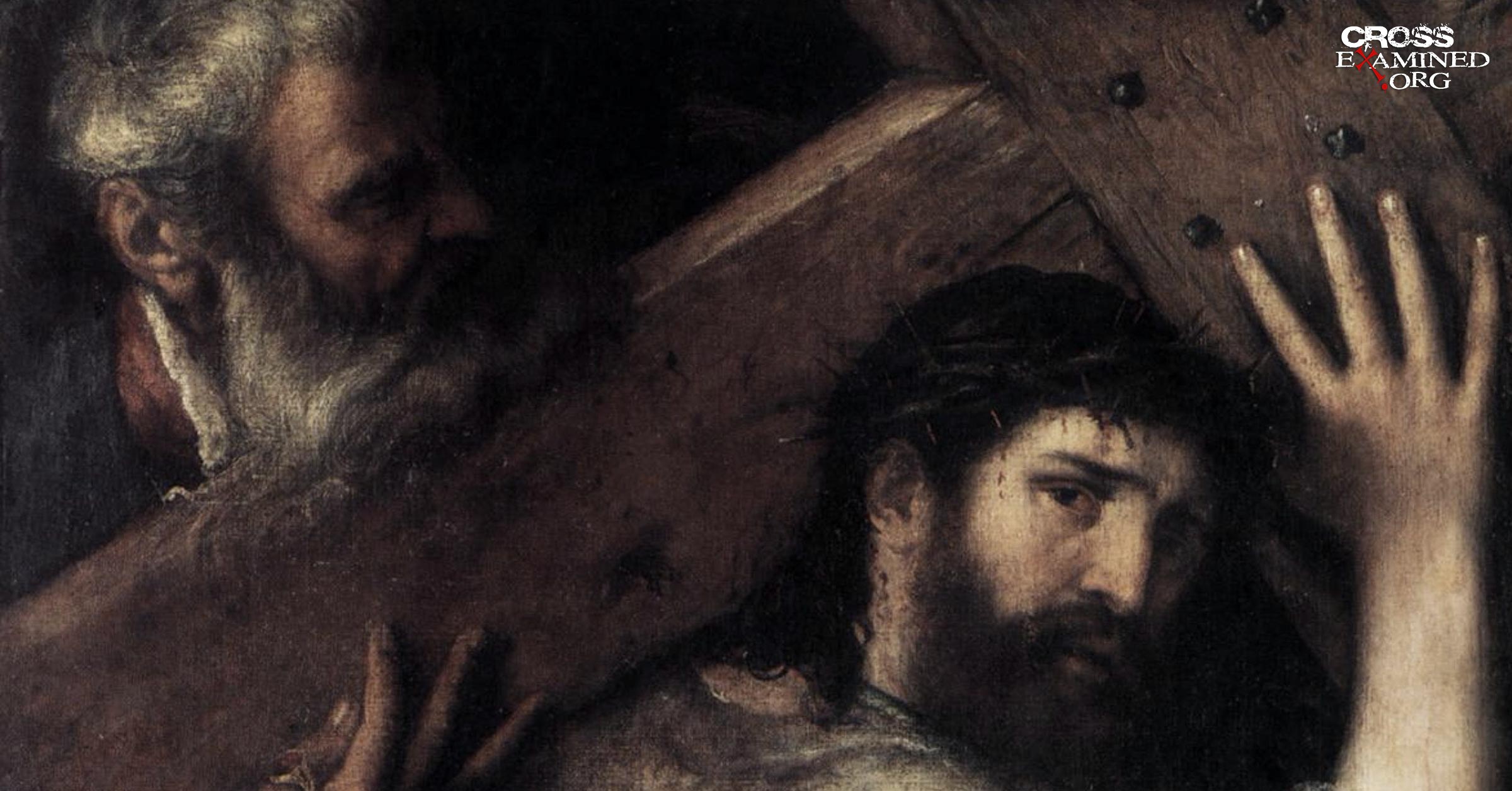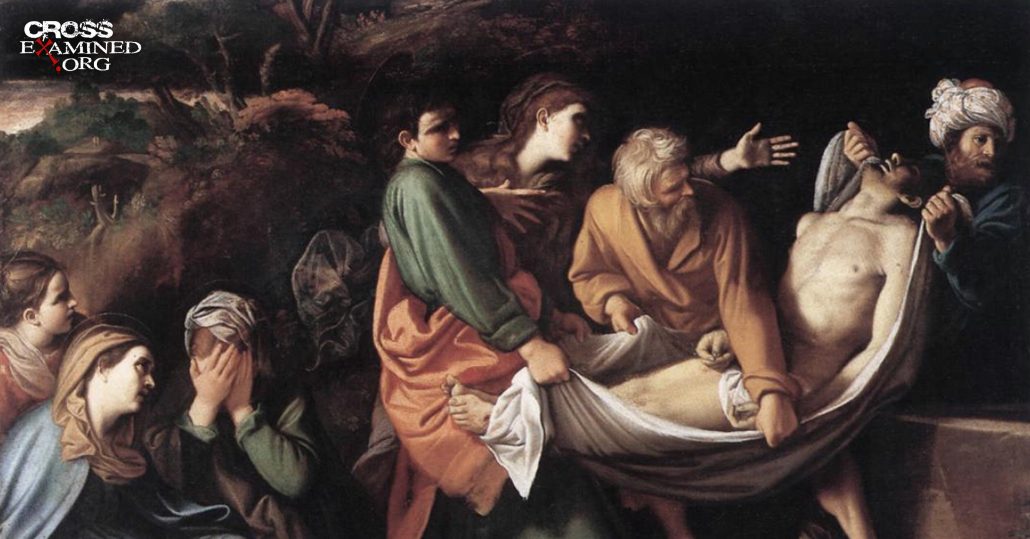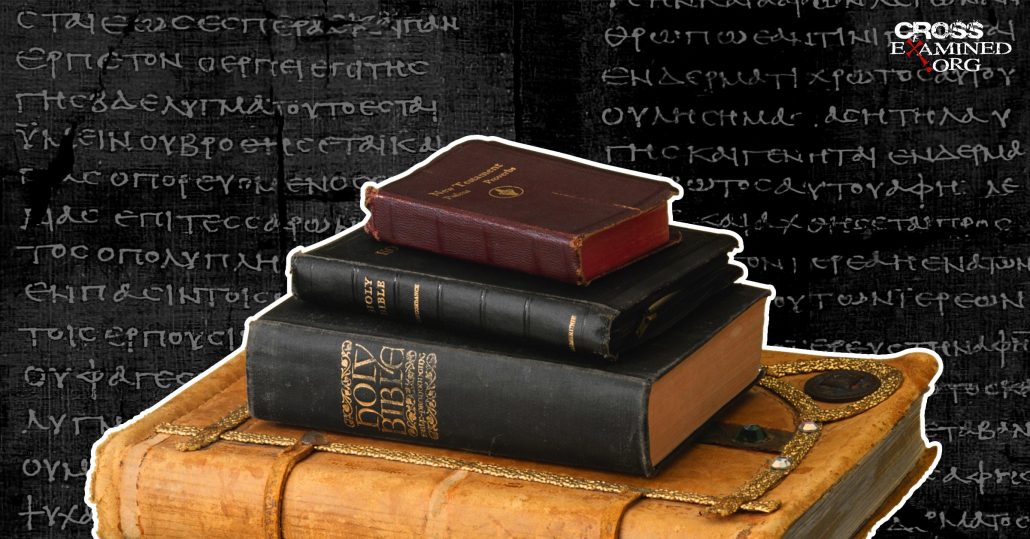It is one of the most iconic incidents in Jesus’ life. We are all familiar with the famous story of Jesus miraculously feeding the five thousand from five loaves and two fish, with no fewer than twelve basketfuls of leftovers. The story is recounted by all four gospel writers: Matthew, Mark, Luke, and John. But just how historical is this story? In this article, I attempt to highlight several lines of evidence which, when taken as a cumulative whole, strongly suggest that these reports are rooted in a real historical event. I attempt to show this by virtue of appeal to undesigned coincidences, reconcilable variations, and other telltale markers of independence and verisimilitude. What I hope to demonstrate is that the feeding of the five thousand is the second-best attested New Testament miracle, after the resurrection of Jesus. For many of the insights that follow, I am indebted to my friend and colleague Dr. Lydia McGrew, both through her writing, and through her direction towards Christian authors from times past (such as Paley, Blunt, and Birks) who identified many of these hallmarks of verisimilitude in the gospel accounts.
Undesigned Coincidences Relating to the Feeding of the Five Thousand
An undesigned coincidence occurs when you have two or more accounts that casually interlock in a way that points to the truth of both. In its most classic form, one account of an event may raise a natural question that is answered incidentally and casually by the other. Much like a puzzle, it fits like a hand into a glove. This is not at all the type of pattern that one would expect to see in the event of some kind of conspiratorial manufacturing of the story. When taken as a cumulative argument — many instances considered collectively — one has a powerful argument for the overall general reliability and integrity of the gospel narratives. I will now offer a handful of examples pertaining to the feeding of the five thousand narratives.
The Role of Philip
In John 6:1-7, we are told:
Some time after this, Jesus crossed to the far shore of the Sea of Galilee (that is, the Sea of Tiberias), and a great crowd of people followed him because they saw the signs he had performed by healing the sick. Then Jesus went up on a mountainside and sat down with his disciples. The Jewish Passover Festival was near. When Jesus looked up and saw a great crowd coming toward him, he said to Philip, “Where shall we buy bread for these people to eat?” He asked this only to test him, for he already had in mind what he was going to do. Philip answered him, “It would take more than half a year’s wages to buy enough bread for each one to have a bite!”
Now, Philip is a fairly minor character in the New Testament. And one might, naturally, be inclined to wonder why Jesus hasn’t turned to someone a little higher in the pecking order (such as Peter or John). Perhaps even Judas Iscariot would have been a more suitable choice for this role in the account since John informs us elsewhere that he was responsible for the money bag (Jn 13:29).
A partial clue is provided in John 1:44: “Philip, like Andrew and Peter, was from the town of Bethsaida.” Likewise, John 12:21 refers to “Philip, who was from Bethsaida in Galilee.” What is so significant about Philip being from the town of Bethsaida? We don’t learn this until we read the parallel account in Luke’s gospel (9:10-17). At the opening of the account (verses 10-11), we are told,
“When the apostles returned, they reported to Jesus what they had done. Then he took them with him and they withdrew by themselves to a town called Bethsaida, but the crowds learned about it and followed him. He welcomed them and spoke to them about the kingdom of God, and healed those who needed healing.”
And so, we are informed by Luke (who does not mention Philip in this context at all) that the event was actually taking place in Bethsaida — the town from which Philip was from! Jesus thus turns to Philip, whom, he believed, would be familiar with the area. This also perhaps illuminates the involvement of Andrew (who was also from Bethsaida — Jn 1:44) in the reply. Andrew says to Jesus in John 6:9, “There is a boy here who has five barley loaves and two fish, but what are they for so many?” One may conjecture that Andrew, being from Bethsaida where this miracle took place, knew the boy, or perhaps Jesus had directed his question to Philip and Andrew, both of whom were locals.
The reason for Jesus addressing Philip in John 6:5 is never explicitly spelled out in the text. Instead, one has to do the detective work of piecing together the clues drawn from John 6:5; John 12:21 (and 1:44); and Luke 9:10-17. This is precisely the sort of casual connection between accounts that one might expect to see in historical reportage, though it is more surprising given the hypothesis of fictionalization.
The Green Grass, and the Coming and Going Crowds
Curiously, Mark’s narrative describes the people as sitting down in groups on “the green grass” (verse 39). This is significant, not because Mark mentions people sitting on the grass (Matthew 14:19 also records people sitting “down on the grass”, and Luke 9:15 reports that “everyone sat down”, and John 6:10 notes that “There was plenty of grass in that place, and they sat down.”). It is significant because Mark reports that the grass was “green”. This is particularly intriguing when one considers that, in Israel (particularly in Galilee) the grass is brown!
What makes this even more intriguing is that Mark’s gospel (6:30-42) also states, in verses 30-31 that,
The apostles gathered around Jesus and reported to him all they had done and taught. Then, because so many people were coming and going that they did not even have a chance to eat, he said to them, “Come with me by yourselves to a quiet place and get some rest.
Mark casually alludes to there being many people coming and going, indicating the hustle and bustle and general business of the area during this time. But why were there many coming and going? Mark does not tell us. In John’s account, however (6:4), we are told that “The Jewish Passover Festival was near.” This explains why many people were “coming and going.” Moreover, during the season of the Passover (i.e. in the springtime), there is a small window where the grass is indeed green in that area, due to elevated levels of rainfall. When this is coupled with the detail given to us by John that the Passover festival was at hand, this illuminates and makes sense of the casual (but surprising) statements in Mark that the grass was green and that people were coming and going.
Counting the Number of People
A question that arises when one reads the accounts of the feeding of the five thousand is how the evangelists knew the number of people. Matthew’s account emphasizes that this number specifically refers to men: “And those who ate were about five thousand men, besides women and children” (Mt 14:21). Mark 6:44, Luke 9:14, and John 6:10 also indicate that it was five thousand men who were fed (though the phrase “besides women and children” is unique to Matthew). But how was this number estimated? According to Mark 6:39-40, “Then he commanded them all to sit down in groups on the green grass. So they sat down in groups, by hundreds and by fifties.” Likewise, Luke 9:14-15 indicates that “he said to his disciples, ‘Have them sit down in groups of about fifty each.’ And they did so, and had them all sit down.’” Having the people organized into groups would have doubtless made it easier to distribute the food, and it would also provide a means of arriving at an estimate of their number.
How, though, were the evangelists able to determine that there were five thousand men specifically, besides women and children? John’s gospel, which omits mention of the organization of the people into groups, provides an important clue. In John 6:10-11, we are told, “Jesus said, ‘Have the people sit down.’ Now there was much grass in the place. So the men sat down, about five thousand in number. Jesus then took the loaves, and when he had given thanks, he distributed them to those who were seated. So also the fish, as much as they wanted.” Thus, like Mark and Luke, John informs us that Jesus told the disciples to have the people sit down in groups. However, John uniquely tells us that it was the men who in fact sat down. This, then, illuminates, in a casual and incidental way, how the number of men could be reliably estimated.
Denouncing the Unrepentant Cities
In Matthew 11:21, Jesus denounces the unrepentant cities, saying, “Woe to you, Chorazin! Woe to you, Bethsaida! For if the miracles that were performed in you had been performed in Tyre and Sidon, they would have repented long ago in sackcloth and ashes.” The reader is left wondering what miracles were performed in these cities. We are not told in Matthew’s gospel. It is only in light of Luke’s account of the feeding of the five thousand (chapter 9), in which we are told of the event’s occurrence in Bethsaida, that this statement begins to make sense. Although Matthew 14:13-21 does narrate the feeding of the five thousand, no mention is made of Bethsaida. Furthermore, Matthew, who often arranged his material thematically rather than chronologically, gives his account of the feeding of the five thousand some three chapters subsequent to the pronouncement of woe upon Bethsaida. Only by comparing the account in Luke do we discover that the feeding of the five thousand in fact transpired before the woes were pronounced by Jesus upon Bethsaida.
Strikingly, not only is Luke’s mention of Bethsaida as the location of the feeding found in a different context from the woes; it is found in an apparently unrelated context — that is, the pericope in which it occurs has absolutely nothing to do with the feeding of the five thousand. Jesus simply refers generally to the mighty deeds performed in Chorazin and Bethsaida. There is nothing in the immediate context to suggest that Jesus is making an allusion to the feeding of the five thousand. Indeed, the fact that Matthew contains no information about any miracle performed in Chorazin undermines the idea that the reason Luke mentions Bethsaida as the setting of the feeding of the five thousand miracle is to fill in the missing information in relation to Jesus’ statement in Matthew 11:21.
The Messianic Secret
Throughout the synoptic accounts, Jesus often sternly warns people not to publicly disclose His identity. In scholarly circles, this is known as the “messianic secret.” We also see Jesus frequently seeking to avoid large crowds. Those features of Jesus’ behavior are illuminated by John 6:15, which immediately follows the account of the feeding of the five thousand, in which we read, “Perceiving then that they were about to come and take him by force to make him king, Jesus withdrew again to the mountain by himself.” Given the popular Messianic expectation of an individual who would overthrow the Roman occupiers and re-establish a Davidic reign, Jesus naturally feared that public disclosure of His Messianic identity would result in misunderstandings and attempts by the crowds to make Him King by force. Thus, John 6:15 explains the Messianic secret in the Synoptics.
Eating Jesus’ Flesh and Drinking His Blood?
Another coincidence pertains to Jesus’ statements, prompted by the episode of the feeding of the five thousand, in John 6:51-58:
I am the living bread that came down from heaven. If anyone eats of this bread, he will live forever. And the bread that I will give for the life of the world is my flesh […] Truly, truly, I say to you, unless you eat the flesh of the Son of Man and drink his blood, you have no life in you. Whoever feeds on my flesh and drinks my blood has eternal life, and I will raise him up on the last day. For my flesh is true food, and my blood is true drink. Whoever feeds on my flesh and drinks my blood abides in me, and I in him. As the living Father sent me, and I live because of the Father, so whoever feeds on me, he also will live because of me. This is the bread that came down from heaven, not like the bread the fathers ate, and died. Whoever feeds on this bread will live forever.
These words of Jesus, in my judgment, are especially likely to be authentic for at least three different reasons. First, particularly given the Jewish context (recall that the fourth gospel, in which these sayings uniquely are found, was evidently authored by a Jew), this is an exceedingly unlikely thing for the author to make up out of whole cloth. In fact, many of Jesus’ followers, in verse 60, said “This is a hard saying; who can listen to it?” Verse 66 further indicates that “After this many of his disciples turned back and no longer walked with him.” Second, Jesus’ allusion to the loaves that the crowd had eaten (see verse 26), as the basis of his teaching is in keeping with Jesus’ consistent habit across all four gospels (and across diverse episodes) of drawing lessons from his surroundings and from the occasion (this is an instance of what I call “artless similarities”, which I have discussed in more detail in this article). Third, these sayings are supported by an undesigned coincidence. Jesus’ language in this passage (which is found only in John, and not in the Synoptics) is strikingly similar to His institution of the Lord’s supper (which is found in all three of the Synoptics, but not in John). Here are the words of institution, as given by Luke 22:19-20: “This is my body, which is given for you. Do this in remembrance of me…This cup that is poured out for you is the new covenant in my blood.” Lydia McGrew suggests that[1],
Jesus was speaking of the Lord’s supper in John 6, not in the sense that the crowds were expected to understand this at that time by his teaching, but in the sense that he was alluding cryptically to something that he would make clearer later to those who continued to follow him. This sort of veiled allusion would hardly be uncharacteristic of Jesus’ teaching as we find it elsewhere. For example, his words to Nicodemus about the Holy Spirit in John 3 would not have been clear to Nicodemus at the time but would have become much clearer in the light of Pentecost. The statement, “Destroy this Temple, and in three days I will raise it up” recorded in John 2:19 is glossed by John in hindsight, as referring to the resurrection, but Jesus himself apparently did not explain it at the time.
It is important to remember that the institution of the Lord’s supper is mentioned only in the Synoptics, and Jesus’ strange statements about eating His flesh and drinking His blood is found only in John. McGrew concludes that “he spoke this way in John 6 in anticipation of instituting the Lord’s Supper at the end of his ministry, expecting his followers to put it all together later if they persevered in discipleship (as contrasted with those who fell away in John 6.66-67).”[2]
Other Markers of Verisimilitude
John James Blunt notes the consistent distinction that is maintained between the number and kinds of leftover baskets that were collected in the two events[3]:
[T]here was, no doubt, a marked difference between these two vessels, whatever that difference might be, for κόφινος is invariably used when the miracle of the five thousand is spoken of; and σπυρίς is invariably used when the miracle of the four thousand is spoken of. Moreover, such distinction is clearly suggested to us in Matt. xvi. 9, 10, where our Savior cautions his disciples against the “leaven of the Pharisees and Sadducees” and in so doing, alludes to each of these miracles thus: “Do ye not understand, neither remember the five loaves of the five thousand, and how many baskets (κοφίνους) ye took up? Neither the seven loaves of the four thousand, and how many baskets (σπυρίδας) ye took up?” though here, again, the distinction is entirely lose in our translation, both [words] being still rendered “basket” alike.
This distinction between the words used for “basket” (κόφινος vs. σπυρίς) is also maintained in the parallel account of Jesus’ rebuke in Mark 8:19-20.
Blunt concludes[4],
[S]uch uniformity mark[s] very clearly the two miracles to be distinctly impressed on the minds of the Evangelists, as real events; the circumstantial peculiarities of each present to them, even to the shape of the baskets, as though they were themselves actual eyewitnesses; or at least had received their report from those who were so. It is next impossible that such coincidence in both cases, between the fragments and the receptacles, respectively, should have been preserved by chance; or by a teller of a tale at third or fourth hand; and accordingly we see that the coincidence is in fact entirely lost by our translators, who were not witnesses of the miracles; and whose attention did not happen to be drawn to the point.
Interestingly, the same word for basket that is used for the feeding of the four thousand (σπυρίς) is also used of the basket used to lower Saul over the wall in Damascus (Acts 9:25). This suggests that these baskets were quite large, which explains why there were fewer leftover baskets collected for this event (seven compared to the twelve baskets collected after the feeding of the five thousand).
Reconcilable Variations
Another category of evidence bearing on the case for the resurrection is the phenomenon of reconcilable variations, so-named by the nineteenth-century Anglican scholar Thomas Rawson Birks.[5] A reconcilable variation refers to when there exist two accounts of the same event or at least two accounts that appear to cross over the same territory at some point, and at first blush, they seem so divergent that it is almost awkward; but then, on further thought, they turn out to be reconcilable in some natural fashion after all. When two accounts appear at first so divergent that one is not sure they can be reconciled, that is significant evidence for their independence. When they turn out, upon closer inspection or upon learning more information, to be reconcilable without forcing, after all, one has almost certainly independent accounts that dovetail. A few examples pertain to the feeding of the five thousand accounts.
Is Mark Confused About the Location?
According to Luke 9:10, the event of the feeding of the five thousand took place in Bethsaida. However, according to Mark 6:45, following the feeding of the five thousand miracle, Mark tells us,
Immediately he made his disciples get into the boat and go before him to the other side, to Bethsaida, while he dismissed the crowd.
This presents an apparent discrepancy. If Jesus and the disciples were already in Bethsaida, why does he tell his disciples to get into the boat and go to the other side of the lake, to Bethsaida? At first blush, this certainly seems to be a clear-cut instance of a contradiction between the accounts. The first thing to note is that we have independent confirmation that the event occurred in a deserted area near Bethsaida, based on two of the undesigned coincidences noted above. Thus, there are good historical grounds for believing that the event in fact took place in Bethsaida.
There is yet further confirmation of the location of the miracle as being somewhere “across the top” of the Sea of Galilee from Capernaum. It is Mark himself who says that they didn’t even have leisure to eat before the feeding, because there were “many coming and going” (Mark 6:31), and that they got into the boat to get away from the crowds. That fits well with their being in the region of Capernaum prior to going away. There is still a further undesigned coincidence involved there which connects Mark and John, also discussed above. It was just before the Passover (John 6:4), and there would have been crowds coming through Capernaum, travelling down to Jerusalem. Thus, the picture is well-explained by their going from the Capernaum region (on the top west coat of the Sea of Galilee) across the top of the region around Bethsaida, and then, when they returned “to the other side”, returned to the northwest side. In fact, Mark explicitly says that they landed at Gennesaret when they had crossed over (Mark 6:53)! Thus, this actually, far from contradicting, confirms the idea of which direction they were going. If they were really crossing over “to Bethsaida” as if to land at or near Bethsaida, they couldn’t have landed at Gennesaret! Thus, πρὸς Βηθσαϊδάν, even within Mark itself, cannot be taken to mean that the feeding of the five thousand occurred in a radically different location from the region of Bethsaida named explicitly in Luke and otherwise confirmed by undesigned coincidences. Therefore, there is good reason to believe that the feeding of the five thousand miracle took place in Bethsaida.
This still leaves unanswered the question of what Mark means in 6:45. The Greek text says that the disciples were to enter into the boat and προάγειν εἰς τὸ πέραν πρὸς Βηθσαϊδάν. Lydia McGrew argues that the Greek preposition πρὸς can mean “over against” (or “across from”).[6] However, I am at this point unpersuaded by this translation. While one of the possible meanings of πρὸς is “against” (e.g. Mt 4:6; Mk 12:12; Lk 4:11; 20:19; Acts 6:1; 9:29; 19:38; 23:30; 24:19; 26:14), I have been unable to find any instances, in either the New Testament or the Greek Septuagint, where the preposition unequivocally means geographically “opposite to”, as would be required by McGrew’s interpretation.
Another possibility is that, in going over to the other side (to the Capernaum side) they were going to pass Bethsaida — that is, that the actual location of the feeding was slightly to the east of Bethsaida itself (recall that the event actually took place at a desolate area, in proximity to Bethsaida — Mt 14:13; Mk 6:32; Lk 9:12). Indeed, the stated location of Bethsaida, I would argue, is being used in a regional sense (in the same way that I might say I live in Boston even though technically I live in a suburb of Boston). Hence, when they left in Mark to go to the other side, they could have been going “toward” Bethsaida, which would be a legitimate understanding of the preposition πρὸς.
A yet further option, though incompatible with inerrancy (see my article here for those who are concerned about this), is that Mark’s source, quite plausibly the apostle Peter, misspoke a single word when reporting the event. This is not antecedently implausible. Misspeaking a single word on occasion is something that anyone experienced in public speaking is all too familiar with.
Whatever the actual explanation, this apparent discrepancy points to the literary independence of Mark and Luke.
Mark Goodacre has put forward a theory of “editorial fatigue” in the gospels.[7] Goodacre argues that editorial fatigue is “a phenomenon that will inevitably occur when a writer is heavily dependent on another’s work. In telling the same story as his predecessor, a writer makes changes in the early stages which he is unable to sustain throughout.” [3] Goodacre claims that the best example of this phenomenon pertains to the feeding of the five thousand accounts. He cites Mark 6:35-36 and the parallel in Luke 9:12.
- Mark 6:35-36: And when it grew late, his disciples came to him and said, “This is a desolate place, and the hour is now late. Send them away to go into the surrounding countryside and villages and buy themselves something to eat.”
- Luke 9:12: Now the day began to wear away, and the twelve came and said to him, “Send the crowd away to go into the surrounding villages and countryside to find lodging and get provisions, for we are here in a desolate place.”
Goodacre comments,
The adjective used by both Mark and Luke is ερημος, lonely, desolate, abandoned. Clearly it is nonsense to say ‘we are here in a desolate place’ when in the Lucan setting they are not. After all, if the crowd were in a city, they would not need to go to the surrounding villages and countryside to find food and lodging. Further, since in Bethsaida food and lodging ought to be close to hand, Luke’s comment that the day was drawing to a close lacks any relevance and, consequently, the feeding lacks the immediate motive that it has in Mark. In short, by relocating the Feeding of the Five Thousand, without being able to sustain the new setting with its fresh implications throughout, Luke has spoilt the story.
This argument, in my opinion, is exceedingly weak. Goodacre has succeeded in creating a problem where there isn’t one. The disciples’ statement concerning the surrounding places where the people could go to purchase food indicates that the “desolate place” was not far from those surrounding villages and countryside. As stated previously, the stated location of Bethsaida is being used in a regional sense. This is the most natural way of reading Luke’s account. Furthermore, Matthew — which most scholars agree was independent of Luke, though utilizing at times common source material — also indicates that they were in a desolate place (Mt 14:13,15). Furthermore, there is also the independent evidence, discussed above, that the location of the feeding of the five thousand as indicated by Luke is correct.
Where did Jesus first see the crowd?
In Mark’s account, the narrative concerning the feeding of the five thousand begins with the disciples returning from a preaching ministry to tell Jesus “all that they had done and taught” (Mk 6:30). Given the business of the place, Jesus told the disciples to “Come away by yourselves to a desolate place and rest a while.” (v. 31). However, “many saw them going and recognized them, and they ran there on food from all the towns and got there ahead of them,” (v. 33). That the people were able to run on ahead of Jesus on foot and arrive before him fits well with the size of the Sea of Galilee, which is only seven miles wide at its widest point. The people came and met Jesus as he was getting out of the boat. Mark tells us that “When he went ashore he saw a great crowd” (v. 34).
Compare this with the account in John 6. John doesn’t mention the disciples’ preaching ministry and their coming to report to Jesus what they had done and taught. Nor does John report Jesus’ instruction to “come away by yourselves to a desolate place and rest a while.” However, John does indicate that Jesus went to the other side of the Sea of Galilee, which John calls by its other name, the Sea of Tiberius (v. 1). According to John, there was a large crowd following Jesus “because they saw the signs that he was doing on the sick” (v. 2). Jesus went up on a mountain and lifted up his eyes and saw the crowd coming toward Him (v. 5). If one were to only read John’s account, one would get the impression that Jesus had gone up to the mountainside with His disciples, and it was only then that He saw the crowd that had been following Him. Note that all four gospels mention the mountain in this region (Mt 14:23; Mk 6:46; Lk 9:28; Jn 6:3). Mark, speaking of the crowd that had followed Jesus, says that Jesus “had compassion on them, because they were like sheep without a shepherd. And he began to teach them many things” (Mk 6:34). In Matthew’s account, we read that “he had compassion on them and healed their sick” (Mt 14:14). In Luke, it mentions both that Jesus “spoke to them of the kingdom of God” and that he “cured those who had need of healing” (Lk 6:11). Thus, we are to picture Jesus having been with the crowd for some time prior to the feeding event. In the synoptics, we are told that when it was getting late, they discussed where to find food for the crowd of people. John, however, does not mention the earlier part of the day. It seems, then, that the crowds converged on him while He had slipped away with His disciples. John’s emphasis, though, is on the feeding through the miraculous multiplication of loaves and fish. The fact that these accounts, which appear upon first blush to contradict one another, fit together so casually reveals the independence of the accounts.
Did Jesus go up the mountain before or after the disciples left in a boat?
A final apparent discrepancy concerns the question of whether Jesus went up into the mountain to escape the crowds and pray following the feeding of the five thousand before or after the disciples left in a boat. John 6:15-16 implies that it was before the disciples left in a boat, whereas Mark 6:45 says that “he made his disciples get into the boat and go before him to the other side, toward Bethsaida, while he dismissed the crowd.” The synoptics, however, do not state that Jesus escorted the disciples down to the boat and then went up the mountain. Rather, the gospels simply report that Jesus instructed them to get into the boat and go over to the other side. The instruction could have been given some distance from the shoreline. Indeed, it plausibly could have taken them some time to winnow their way through the crowd and reach the shoreline. Perhaps they could even hear Jesus dismissing the crowds, or Jesus could have informed them of His intentions.
John’s record of events does not in fact conflict with what we read in Mark, if one reads these events as occurring in a somewhat intertwined manner. It is quite conceivable that John’s mind was following the course of Jesus’ actions, and is picturing, as it got dark, the disciples approaching the shore and getting into the boat. That, however, does not entail that Jesus in fact went up the mountain first. Mark (or his source, plausibly Peter), on the other hand, may be thinking of the urgency of Jesus sending them away. If this is the case, then it is not particularly surprising to find the evangelists describing the events in a slightly different order.
Again, this is precisely what one might expect of independent eyewitness accounts.
Other Marks of Independence
In addition to the foregoing, there are also various other marks of independence. Only John mentions the boy, and that they were barley loaves (Jn 6:9), which fits with the time of year, being near the Passover. Only John mentions that it was Andrew who brought the boy forward (Jn 6:8). Only John mentions the other name of the Sea of Galilee (the Sea of Tiberius), a name that we can confirm from other sources (Jn 6:1). Only John records how far the disciples had rowed when they saw Jesus coming towards him, which is given as an imprecise measurement of twenty-five or thirty stadia, or about three or four miles (Jn 6:19). Matthew and Luke both mention that Jesus healed people (Mt 14:14; Lk 6:11), a detail not supplied by Mark. Only Mark mentions that the disciples landed at Gennesaret (Mk 6:53). This fits with the account in John, which says that they set off for Capernaum (Jn 6:17). One could even view this connection as an undesigned coincidence between Mark and John. Matthew alone mentions that the reason for Jesus leaving with His disciples was that Jesus heard about the death of John the Baptist (Mt 14:13). This is at variance, though compatible, with the statement in Mark 6:31 that it was to get away from the crowds that Jesus instructed the disciples to retreat to a desolate area. The disciples, who witnessed the event, would have been able to draw their own conclusions about what had triggered Jesus’ desire to leave for a desolate place. Finally, only Matthew includes the account of Peter’s request that Jesus ask him to walk toward Him on the water (Mt 14:28-31). This reflects Peter’s impulsive nature, a character trait that is consistent across all four gospels and across diverse episodes (see my article on artless similarities for further discussion of the evidential significance of this).
Conclusion
To conclude, I would argue that the feeding of the five thousand event is the second best attested New Testament miracle after the resurrection. This is, in part, because it is attested in all four gospels and the parallel texts show numerous indicators of independence and verisimilitude, including undesigned coincidences and reconcilable variations. Cumulatively, these indicators strongly suggest that the accounts of the feeding of the five thousand are grounded in a genuine historical event in the ministry of Jesus and contribute to the case for the gospels’ overall reliability.
Footnotes
[1] Lydia McGrew, Hidden in Plain View: Undesigned Coincidences in the Gospels and Acts (Tampa, FL: Deward Publishing Company, Ltd, 2017), 42.
[2] Ibid., 43.
[3] John James Blunt, Undesigned Coincidences in the Writings Both of the Old and New Testament: An Argument of Their Veracity (London: John Murray, 1863), 264.
[4] Ibid., 265.
[5] Thomas Rawson Birks, Horae Evangelicae, or The Internal Evidence of the Gospel History (London: Seeleys, 1852). See also Lydia McGrew, The Mirror or the Mask: Liberating the Gospels from Literary Devices (Tampa, FL: Deward Publishing Company, Ltd, 2019), 316–321.
[6] Lydia McGrew, Hidden in Plain View: Undesigned Coincidences in the Gospels and Acts (Tampa, FL: Deward Publishing Company, Ltd, 2017), 22.
[7] Mark Goodacre, “Fatigue in the Synoptics,” New Testament Studies 44 (1998), 45-58.
Recommended resources related to the topic:
Miracles: The Evidence by Frank Turek DVD and Mp4
Two Miracles You Take With You Everywhere You Go by Frank Turek DVD, Mp3 and Mp4
__________________________________________________________________________________________________________________________________________________
Dr. Jonathan McLatchie is a Christian writer, international speaker, and debater. He holds a Bachelor’s degree (with Honors) in forensic biology, a Masters’s (M.Res) degree in evolutionary biology, a second Master’s degree in medical and molecular bioscience, and a Ph.D. in evolutionary biology. Currently, he is an assistant professor of biology at Sattler College in Boston, Massachusetts. Dr. McLatchie is a contributor to various apologetics websites and is the founder of the Apologetics Academy (Apologetics-Academy.org), a ministry that seeks to equip and train Christians to persuasively defend the faith through regular online webinars, as well as assist Christians who are wrestling with doubts. Dr. McLatchie has participated in more than thirty moderated debates around the world with representatives of atheism, Islam, and other alternative worldview perspectives. He has spoken internationally in Europe, North America, and South Africa promoting an intelligent, reflective, and evidence-based Christian faith.
Original Blog Source: https://cutt.ly/RmXCRdC


